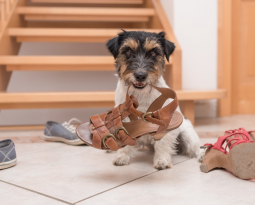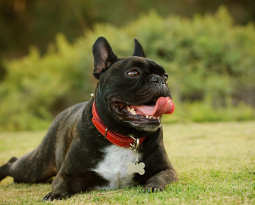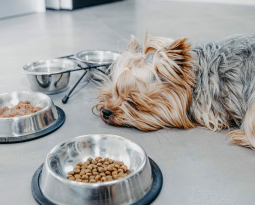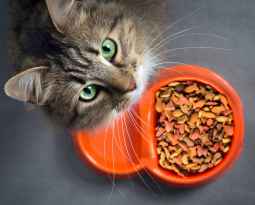When you are preparing for a new puppy, it can feel as if you have a million things to accomplish before their arrival—scheduling their first vet visit, puppy proofing, setting up their crate, buying the appropriate grooming supplies, etc. Whether you are a seasoned dog owner, or a newbie, each puppy will present their own unique challenges, and being prepared will make all of the difference during those first few months. Here are some steps you can proactively take to get your puppy ready for their forever home.
How to Find the Perfect Vet
Finding the right veterinarian for your puppy is one of the most important things you can do as a new dog owner. Until the time that your puppy is five months old, they should be regularly going to the vet every three to four weeks. Establishing which veterinarian you will primarily take your puppy to early on will help you later if your puppy has problems with their digestive system the first couple of weeks and when they start receiving their vaccinations. At your first visit, your puppy will get a full clinical examination, such as being weighed, and an examination of their coat, ears, teeth, eyes, and heart. They will likely receive their first vaccinations at this and subsequent visits.
When finding the right vet for you and your puppy, consider asking your friends and family about their current veterinarian. While reviews on Google are great for preliminary searching, it is difficult to get a feel for a vet’s office without having been a patient there yourself. If you know someone who has a trusted veterinarian, consider taking your new puppy there.
When choosing a veterinarian, consider location. Try and make sure that your vet is close by. This will make it easier for you to book appointments around your schedule and will be more convenient if your puppy has a medical emergency. Also inquire if they accept insurance, allow walk-ins, have an onsite pharmacy, and offer onsite tests and procedures.
If you are looking for a trusted vet, check out your state’s veterinary medical association. Here you will find a list of accredited veterinarians in your area, and board certified veterinary specialists.
If this is your second or third dog, you probably have a trusted veterinarian that you will continue to use for your puppy. However, if you are not satisfied with your current veterinarian, now is the time to make the switch to someone new.
Puppy Proofing Your Home and Yard
When puppy-proofing your home, take into consideration both the inside and the outside. Puppies are prone to exploring everything, and for some, that also means that they are interested in eating everything. While some puppies are more aggressive chewers than others, it is best to prepare for the worst by keeping items off the ground and a careful eye on their toys, until you get a feel for their behavior. From there, you can decide what toys work best for them and what items you need to temporarily store in a closet or off the ground.
While your puppy will be spending the majority of their time inside, preparing your yard is equally as important. Make sure that you have a designated area for your puppy to use the bathroom. This might include a strip of grass (synthetic or real), or an area of rock.
We understand that you might be pressed for space and don’t have the ability to have a large potty space. That’s okay! Many puppies like to eat dirt, and sticks. Try an alternative potty spot, such as gravel.
In most cases, your pup eating an occasional blade of grass or a leaf will not harm them. However, if you find that your puppy is constantly eating dirt, sticks, and more concerningly rocks, they may have puppy pica. Don’t be alarmed, usually puppies grow out of this in a year or so. However, if you do notice this behavior, you should always consult your vet as they could potentially experience a GI blockage.
When you are in the early stages of potty training, try keeping your pup in one general area, eliminating roaming. This will help them learn where they can go in the yard, eliminate accidents in the house, and set them up for future success. It may also be helpful to train your dog to go on command. One way to do this is by saying the same word or phrase every time you take them to the bathroom.
Supplies You Need on Hand
Before your puppy comes home, it is best to be prepared with an arsenal of supplies so that you are ready for whatever they throw at you (food and water bowls, a dog bed, crate, etc.). However, one lesser known product that you will want to keep on hand is a stain and odor remover formulated for dogs. This will help save your carpet and rugs from permanent, smelly stains.
For the first couple of weeks, you might want to place puppy pads in certain areas around your house. Puppy pads can be convenient, especially when they have to go frequently and haven’t quite gotten used to the routine of going outside.
During the first few weeks with your new puppy, you will want to begin working on basic training exercises. A collar, ID tag, and leash are the basic essentials you will want to equip your pup with. If you are teaching your pup how to walk on a leash, consider getting a slip lead. A slip lead, unlike a traditional leash, doesn’t attach to their collar. Instead, you simply slip the leash over their head, making sure it is sitting high on their neck. A slip lead helps teach a dog not to pull and can help lure them into a sitting position.
During training sessions, treats come in handy. Low-calorie training treats can be bought at your local pet store and are a great option if you are doing a long training session.
We all know that puppies love to chew on everything in sight, and can cause damage to your furniture, baseboards, rugs, and shoes. Bitter apple spray helps discourage chewing behavior, is non-toxic, and safe to use on rugs and fabric—Making this a new puppy must have!
Getting Ready For the Car Ride Home
One of the most daunting things you will do as a new puppy owner is driving them home after pick up. They will likely be a bit scared (after all you are strangers) and anxious. This is why it is important to prepare your car and gather all the materials you will need beforehand.
The first item that you should have with you is a couple of towels. After a long plane ride, it is very likely that your puppy used the bathroom in their crate. It’s okay. Accidents happen! Having a towel on hand will make it easier for you to scoop up your new puppy and clean them up a bit before you can bathe them at home.
The next essential item is a portable water bowl and bottle. Your puppy will likely be very thirsty when you pick them up or at some point during the drive home. A portable water bowl will help keep your puppy hydrated.
Your puppy will likely not have a collar or leash on when you go to pick them up. Make sure that you bring their I.D. tag, collar, and leash with you. This will be helpful if you have to get out of the car at some point during the ride home to try and get your puppy to go potty.
As an extra piece of advice, make sure to bring a bag of treats with you. As previously mentioned, your puppy might be a bit anxious or nervous. Giving them a couple of treats on the car ride home will help the two of you bond and establish trust.
Last Paws of Advice You Won’t Want to Fur-get
When getting ready for a new puppy, whether you are a seasoned dog owner or a novice, planning ahead is key. By taking the time beforehand to acquire the essentials, you will be better prepared to handle whatever comes your way. The first few weeks may be challenging, as you are just getting to know each other. Practice patience and remember to cherish every moment.
That’s all for this month on the Acoma Animal Clinic blog. We’ll see you next time!







